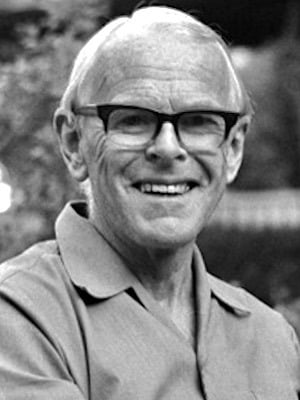Did you know that Denis Burkitt (1911-1993) was a one-eyed Irish doctor? Denis Burkitt was born in County Fermanagh, Northern Ireland where his father, James Burkitt, was the County Engineer. In 1929 Burkitt entered Trinity College, Dublin to study engineering. However, during his first year decided to enroll as a medical student. He graduated in medicine from Trinity College Dublin in 1935. Although he qualified as a surgeon and became a fellow of the Royal College of Surgeons in 1938, he felt his ‘calling’ was to become a missionary doctor in Africa. When he returned to England, he was appointed as Residential Surgical Officer at the Prince of Wales Hospital, Plymouth.
His name is intrinsically linked to a tumor of the jaw, known as Burkitt’s Lymphoma. After WWII he moved to Uganda and stayed in Kampala until 1964. In 1957 he saw a young boy with a rapidly growing jaw tumor. He then saw a number of other patients with a similar illness and noted that the tumor occurred in areas where malaria was endemic. Burkitt published his first clinical description of the tumor in 1958.


In 1961, accompanied by Edward Williams, a missionary doctor, and Clifford Nelson, a Canadian family physician working in the colonial service, Burkitt undertook a 16,000 km journey in South and East Africa. They collected all the cases of jaw tumors and it became clear that the tumor was altitude/temperature dependent.
In 1961 Burkitt gave a lecture in London, attended by Tony Epstein, a pathologist/virologist. He asked Burkitt to send him samples of the jaw tumor so that he could look for viral particles. Eventually Epstein and a colleague, Yvonne Barr, an Irishwoman and a TCD graduate, discovered the Epstein-Barr virus (EBV). The precise role of EBV in the etiology of Burkitt’s Lymphoma remains unclear but undoubtedly malaria infection and its interaction with EBV are important.
Burkitt was anxious to treat children with these tumors but as radiotherapy was not available, he resorted to chemotherapy, then in its infancy. He approached Joe Burchenal in New York who was a leader in the field of treatment of childhood leukemia. Initial responses to methotrexate were dramatic and eventually combination chemotherapy (COM), cyclophosphamide, vincristine and methotrexate was used.
As Denis Wright, lymphoma pathologist, said: ‘Burkitt went to Africa with one eye but saw more than most with two eyes’.1
Learn more here.
